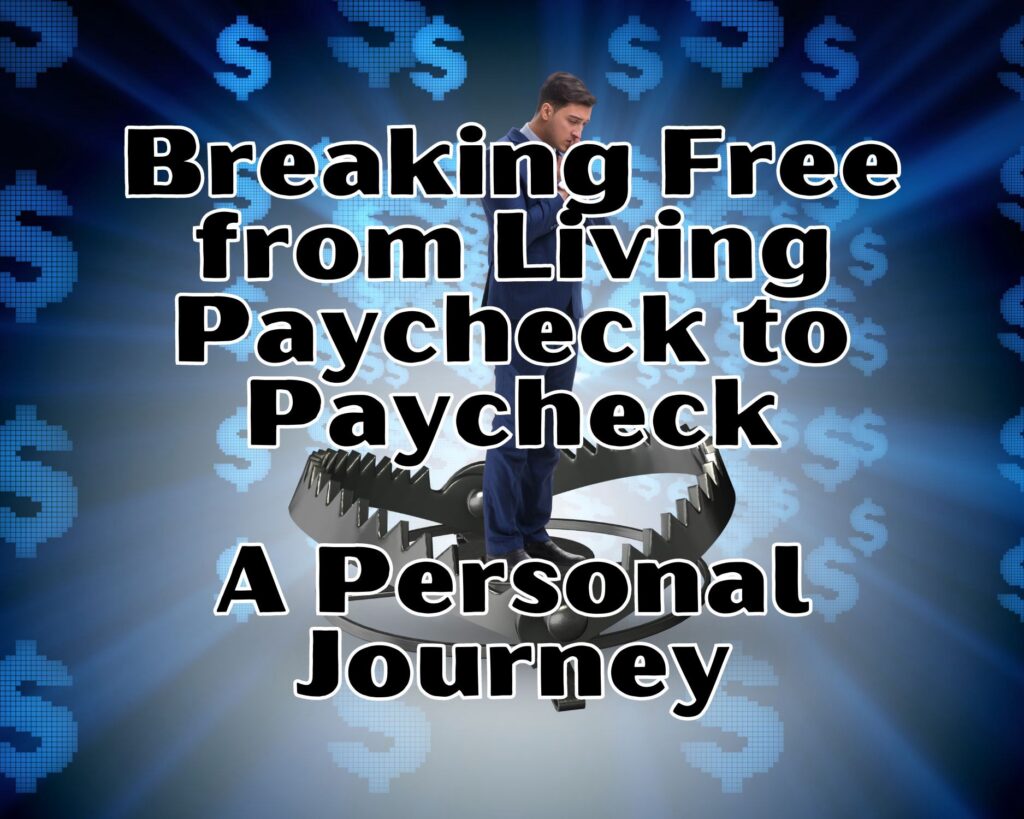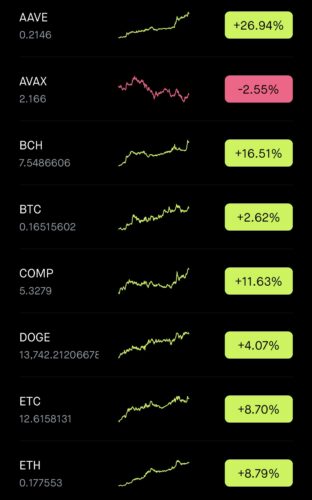Living paycheck to paycheck is a reality for many, but it’s a cycle that can be broken with the right mindset and strategies. Drawing from personal experiences and insights from Rich Money Mind, let’s explore practical steps to change this situation.
Step 1: Assess Your Financial Situation
The first step is to thoroughly assess your current financial situation. This means understanding where your money is going, identifying unnecessary expenses, and recognizing patterns in your spending habits.
- Track Your Spending: Keep a record of all your expenses for a month. This will give you a clear picture of where your money is going.
- Identify Essentials vs. Luxuries: Separate your essential expenses (like rent, utilities, groceries) from non-essential spending.
Step 2: Create a Budget
Once you understand your spending, create a budget that prioritizes essential expenses. Allocate a portion of your income to savings, even if it’s a small amount.
- Use Budgeting Tools: Consider using budgeting apps or tools to help you stay on track.
- Set Realistic Goals: Make sure your budget is realistic and achievable.
Step 3: Reduce Expenses
Look for ways to cut down on unnecessary expenses. This could mean dining out less, canceling unused subscriptions, or finding cheaper alternatives for services.
- Shop Smart: Look for discounts, use coupons, and compare prices before making purchases.
- Reduce Utility Bills: Implement energy-saving measures to lower your monthly bills.
Step 4: Increase Your Income
If possible, look for ways to increase your income. This could be through a side hustle, freelance work, or asking for a raise at your current job.
- Explore Side Gigs: Find something that aligns with your skills and schedule.
- Enhance Your Skills: Invest in learning new skills that could increase your earning potential.
Step 5: Save and Invest
Start building an emergency fund and consider investing to grow your savings. Even small, consistent contributions can make a significant difference over time.
- Emergency Fund: Aim to save enough to cover at least three to six months of living expenses.
- Learn About Investing: Educate yourself about different investment options and start small.
Step 6: Seek Financial Advice
Don’t hesitate to seek advice from financial experts. Websites like Rich Money Mind offer valuable insights and tips on financial planning and wealth building.
Step 7: Stay Committed and Adjust as Needed
Staying committed to your financial plan is crucial. Regularly review and adjust your budget and strategies to align with your changing financial situation.
Breaking free from living paycheck to paycheck is a journey that requires commitment, discipline, and a willingness to make changes. By assessing your financial situation, creating a budget, reducing expenses, increasing income, saving, investing, and seeking advice, you can transform your financial life. Remember, the journey to financial freedom is a marathon, not a sprint. Stay patient and persistent, and you’ll see the change you desire. For more insights on financial planning and wealth building, explore articles on Rich Money Mind, where you can find a wealth of information to guide you on your journey.

Understanding How People Fall into the Paycheck-to-Paycheck Cycle
Falling into the cycle of living paycheck to paycheck is a common scenario, and it often results from a combination of factors. Understanding these factors is crucial in reversing the cycle and achieving financial stability.
Lack of Financial Education
One of the primary reasons people find themselves in this situation is a lack of financial education. Many are not taught how to manage money effectively, budget, save, or invest.
- Financial Literacy: Without a basic understanding of financial management, individuals may struggle to make informed decisions about spending and saving.
- Budgeting Skills: Lack of budgeting skills can lead to overspending and difficulty in tracking where money is going.
High Cost of Living
In many areas, the cost of living is rising faster than wages. This disparity can make it challenging to cover basic expenses, let alone save money.
- Housing and Utilities: These are often the largest expenses and can consume a significant portion of income.
- Healthcare and Education Costs: These costs can also be substantial and unpredictable.
Consumer Debt
High levels of consumer debt, including credit card debt, loans, and other financial obligations, can eat into monthly income, leaving little room for savings.
- Credit Card Debt: High-interest rates on credit card balances can lead to a cycle of debt that’s hard to break.
- Loans and Mortgages: Large debts like student loans or mortgages can significantly reduce disposable income.
Economic Factors
Economic factors such as job loss, reduced hours, or stagnant wages can push individuals into living paycheck to paycheck.
- Job Security: In an unstable job market, the threat of unemployment can be a constant worry.
- Wage Stagnation: When wages do not keep up with inflation, purchasing power decreases.
Lifestyle Inflation
As income increases, so does spending. This phenomenon, known as lifestyle inflation, can prevent people from saving even as they earn more.
- Keeping Up Appearances: Social pressures to maintain a certain lifestyle can lead to overspending.
- Instant Gratification: The desire for immediate satisfaction can lead to impulsive buying decisions.
Breaking the Cycle
Understanding these factors is the first step in breaking the paycheck-to-paycheck cycle. It involves a combination of increasing financial literacy, budgeting, reducing expenses, managing debt, and adjusting lifestyle choices.
- Education and Budgeting: Learning basic financial management skills and creating a realistic budget are essential.
- Debt Management: Developing a strategy to pay down debt, starting with high-interest debts, can free up more income.
- Lifestyle Adjustments: Making conscious choices to live within or below one’s means can prevent lifestyle inflation.
What Are the First Steps to Take When Trying to Stop Living Paycheck to Paycheck?
- Assess Your Financial Situation: Begin by tracking your spending to understand where your money goes each month.
- Create a Budget: Develop a realistic budget that prioritizes essential expenses and includes a savings plan.
- Reduce Unnecessary Spending: Identify and cut back on non-essential expenses to free up more of your income.
How Can I Save Money If I’m Barely Covering My Expenses?
- Analyze Your Spending: Look for areas where you can cut back, even if they seem small. Every little bit adds up.
- Consider Cheaper Alternatives: Switch to more affordable options for services and goods you regularly use.
- Increase Your Income: Explore side jobs or ask for a raise at your current job to boost your income.
Is It Possible to Get Out of Debt While Living Paycheck to Paycheck?
Yes, it’s possible, but it requires a strategic approach:
- Prioritize High-Interest Debts: Focus on paying off high-interest debts first to reduce the total interest you’ll pay.
- Consolidate Debts: Consider debt consolidation options to lower interest rates and monthly payments.
- Strict Budgeting: Adhere to a strict budget to allocate more funds toward debt repayment.
How Important Is an Emergency Fund?
An emergency fund is crucial as it provides a financial cushion for unexpected expenses, reducing the need to rely on credit cards or loans. Aim to save enough to cover at least three to six months of living expenses.
Can Lifestyle Inflation Be Avoided?
Yes, lifestyle inflation can be avoided by:
- Conscious Spending: Make deliberate decisions about spending, focusing on needs rather than wants.
- Set Financial Goals: Having clear financial goals can help you stay motivated to save rather than spend.
- Regular Financial Reviews: Periodically review your finances to ensure you’re on track with your goals.
What Role Does Financial Literacy Play in Breaking This Cycle?
Financial literacy is key as it equips you with the knowledge to make informed financial decisions, understand the importance of saving, and effectively manage debt. Educating yourself about personal finance can fundamentally change your approach to money management.
Are There Any Tools or Resources That Can Help in Budgeting and Financial Planning?
Yes, there are many tools and resources available:
- Budgeting Apps: Apps like Mint or YNAB can help track spending and create budgets.
- Financial Blogs and Websites: Sites like Rich Money Mind offer valuable tips and advice on financial planning.
- Financial Advisors: For personalized advice, consider consulting with a financial advisor.
Further Insights on Financial Independence from Rich Money Mind
Rich Money Mind offers a variety of articles that can provide further guidance and inspiration for those looking to achieve financial independence and break free from living paycheck to paycheck. Here are some articles that might be particularly helpful:
Owning Your Future: Taking Charge of Your Destiny
This article emphasizes the importance of taking control of your financial future. It discusses strategies for setting and achieving financial goals, which can be crucial for those looking to change their financial situation.
Mastering the Business Journey: Create, Conquer, and Repeat
For those considering entrepreneurship as a path to financial freedom, this article provides insights into the cycle of creating, conquering, and repeating successful business strategies.
Why Solana Is So Impressive: A Look at Its Performance
Exploring investment opportunities like cryptocurrency can be part of a broader strategy to improve one’s financial situation. This article offers an analysis of Solana’s performance in the cryptocurrency market, which could be informative for potential investors.



